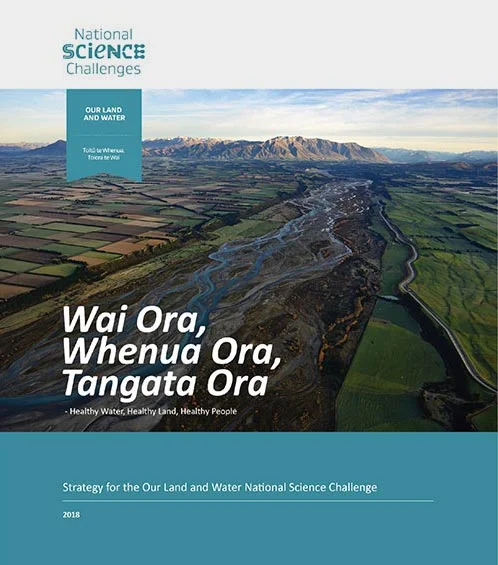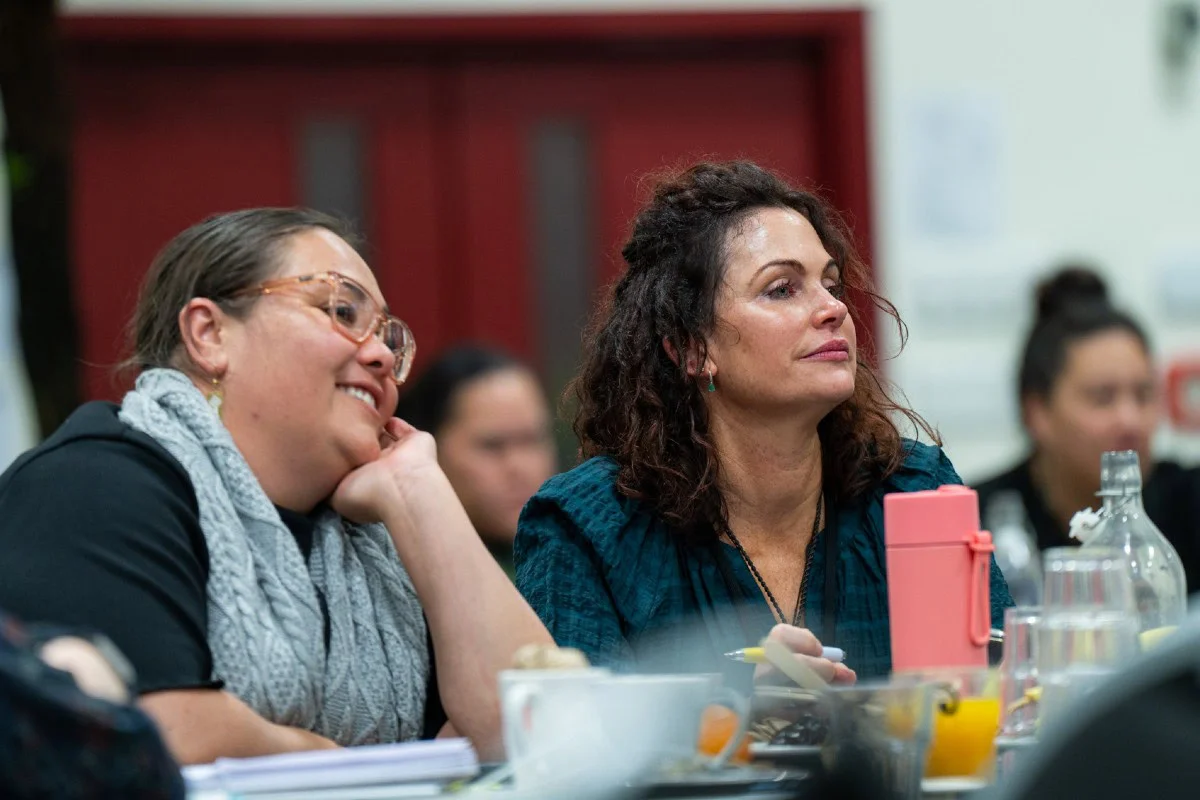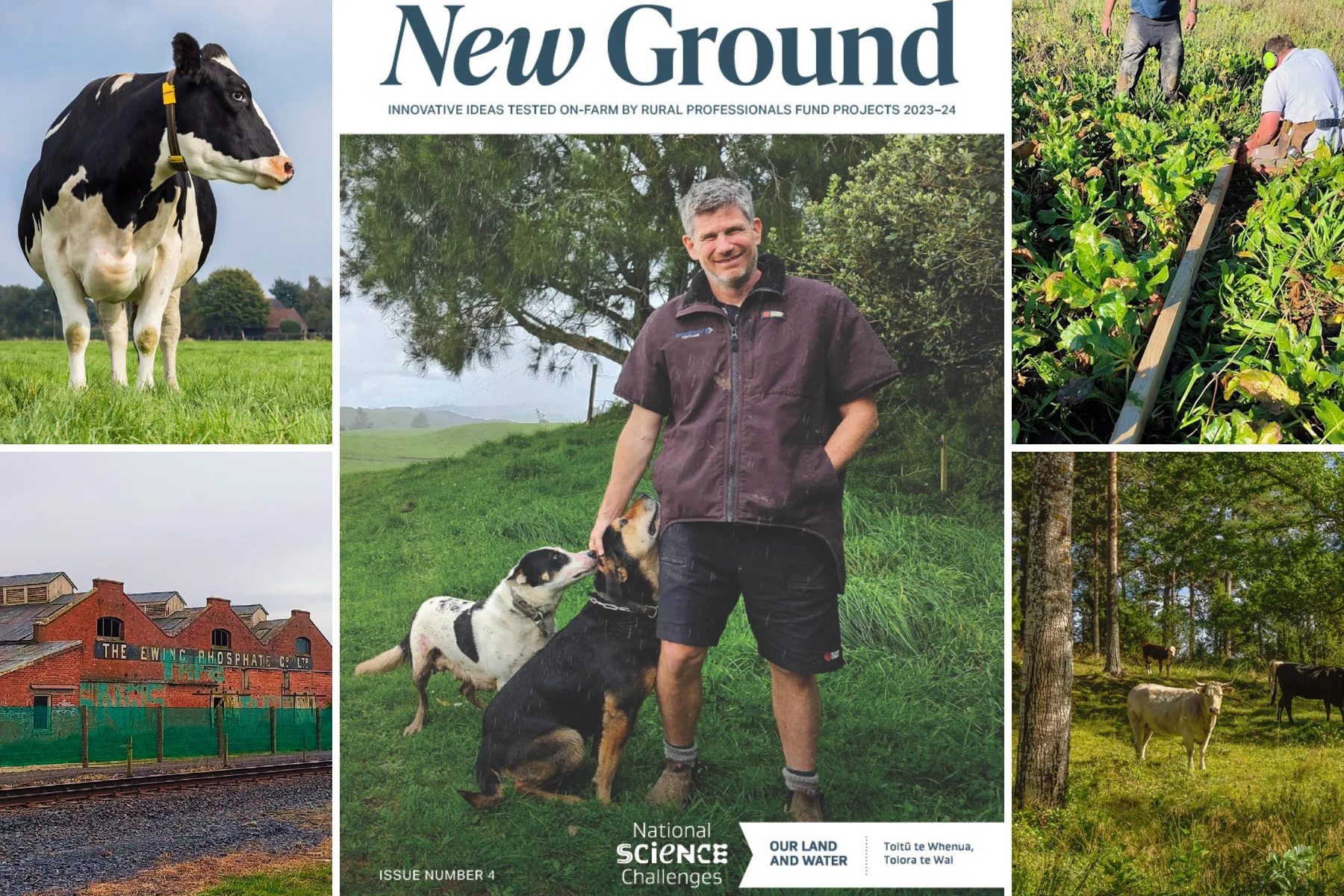Supporting Complex Decisions on Land-Use Changes
A framework to support making major decisions about on-farm change is described in a short Research Findings Brief, for farmers, growers, farm consultants, rural professionals and policy makers. This framework can help land managers be more certain that land-use change decisions are likely to meet their needs and concerns.
New Zealanders care deeply about our rivers and lakes, and we have high expectations for healthy fresh water. Research has made it clear that in some river catchments, farmers and growers will need to de-intensify or change the way they use their land, to allow water to return to good health.
Research plays a part in understanding, supporting and encouraging this land-use change, especially to ‘next generation systems’. Next generation farm systems (such as redesigned or redeveloped systems and enterprises, new or novel enterprises, and new technologies) aim to reduce food production’s environmental footprint and maintain or increase profit.
Progress in the transition to these farm systems has been slow, and hasn't yet reached the scale required to reduce food production’s environmental footprint.
That's because making these changes is a complex business decision, which needs to meet the expectations of the land manager as well as wider society. There are many land uses and a multitude of factors to consider. It is also a highly individual process, that differs for every person or group. The chosen land use must best suit the individuals’ land and motivations for change.
The Next Generation Systems programme worked with different types of land managers who were considering land-use changes. Researchers developed, tested and applied a multi-criteria decision-making (MCDM) framework for supporting decision-making about land-use change.
Find out more about this research in Research Findings Brief: Supporting complex decisions on land-use changes (10-page PDF)
How can this research be used?
Researchers developed, tested and used a software-based MCDM framework that is now available to those working on land-use change. (Contact Alan Renwick at Lincoln University to find out more about accessing and using the MCDM tool.)
The tool allows land managers to simultaneously consider multiple criteria, and visualise the relative importance they place on each criteria. They can then assess how their priorities fit with different land-use options. This process can support decision-making processes from the outset, or those that are underway.

comparison between domains
Example: Edible nuts in Rotorua lakes
One of the case studies that contributed to the farmework development involved a Māori forest owner, a small block/lifestyle farmer and a sheep/beef/forest farmer. All were all interested in integrating edible nut trees into their systems.
The most valued domains for the Māori forest owner and the sheep/beef/forestry farmer were ‘environment’ followed by ‘social wellbeing’. The smallholder valued ‘environment’, but it was rated below ‘regulation’ and ‘market factors’.
Analysis of the factors and forces that would affect the integration of tree nuts into existing systems revealed that scalability appears to be a key factor, and this could be strengthened through cross-sector collaboration.
Example: Identifying crops for hill country farms
The Integrating Horticultural and Arable Land Use Options into Hill Country Farm Systems project used an MCDM framework, developed by Perrin Ag’s Liz Dooley, to help Taihape sheep and beef farmers identify crops to integrate into their systems.
All farmers were interested or possibly interested in horticultural or arable enterprises. Higher-returning niche crops suited to smaller areas of flat land such as medicinal crops, and fruit trees, fruit bushes and nut trees were of greatest interest.
Farmers used the MCDM framework to assess and score the performance of the crops against their selected decision-making criteria.
Most of the farmers found the MCDM process relatively easy and rated it positively. The workshop also raised awareness of the range and variety of crops suited to the area, and people commented that they had gained new insights from using the MCDM process.
More information:
- Next Generation Systems programme
- Contact Alan Renwick at Lincoln University to find out more about accessing and using the MCDM tool
- Balancing the Push and Pull factors of Land-Use Change: A New Zealand Case-Study. Alan Renwick, Robyn Dynes, Paul Johnstone, Warren King, Lania Holt, Jemma Penelope. Regional Environmental Change, February 2022
- Beyond Sustainable Intensification: Transitioning Primary Sectors through Reconfiguring Land-Use. Karen Bayne, Alan Renwick. Sustainability, March 2021
- Integrating horticultural and arable land use options into hill country farm systems: The Multi-Criteria Decision-Making Process. Report for Our Land and Water National Science Challenge, August 2021
- The case for a novel agroforestry system and cross-sector collaboration. Lania Holt, Alan Renwick, Paul Johnstone, Robyn Dynes, Warren King. Nutrient loss mitigations for compliance in agriculture, Fertilizer and Lime Research Centre, Massey University, 2019
- Challenges and Opportunities for Land Use Transformation: Insights from the Central Plains Water Scheme in New Zealand. Alan Renwick, Robyn Dynes, Paul Johnstone, Warren King, Lania Holt, Jemma Penelope. Sustainability, September 2019
- Applying a Multi-Criteria Decision Making Framework to Facilitate Adoption of Next Generation Land-Use Systems in New Zealand. Alan Renwick, Jemma Penelope, Robyn Dynes, Warren King, Paul Johnstone, Lania Holt. NZARES – AARES One day forum, August 2018, Wellington
- Next generation systems: a framework for prioritising innovation. Alan Renwick, Anita Wreford, Robyn Dynes, Paul Johnstone, Grant Edwards, Carolyn Hedley, Warren King, Peter Clinton. Science and policy: nutrient management challenges for the next generation, Occasional Report No 30, Fertilizer and Lime Research Centre, 2017
- Applying a Multi-Criteria Decision Making Framework to Facilitate Adoption of Next Generation Land-Use Systems – under review, not yet published
Author
 View Our Strategy Document 2019 – 2024
View Our Strategy Document 2019 – 2024




